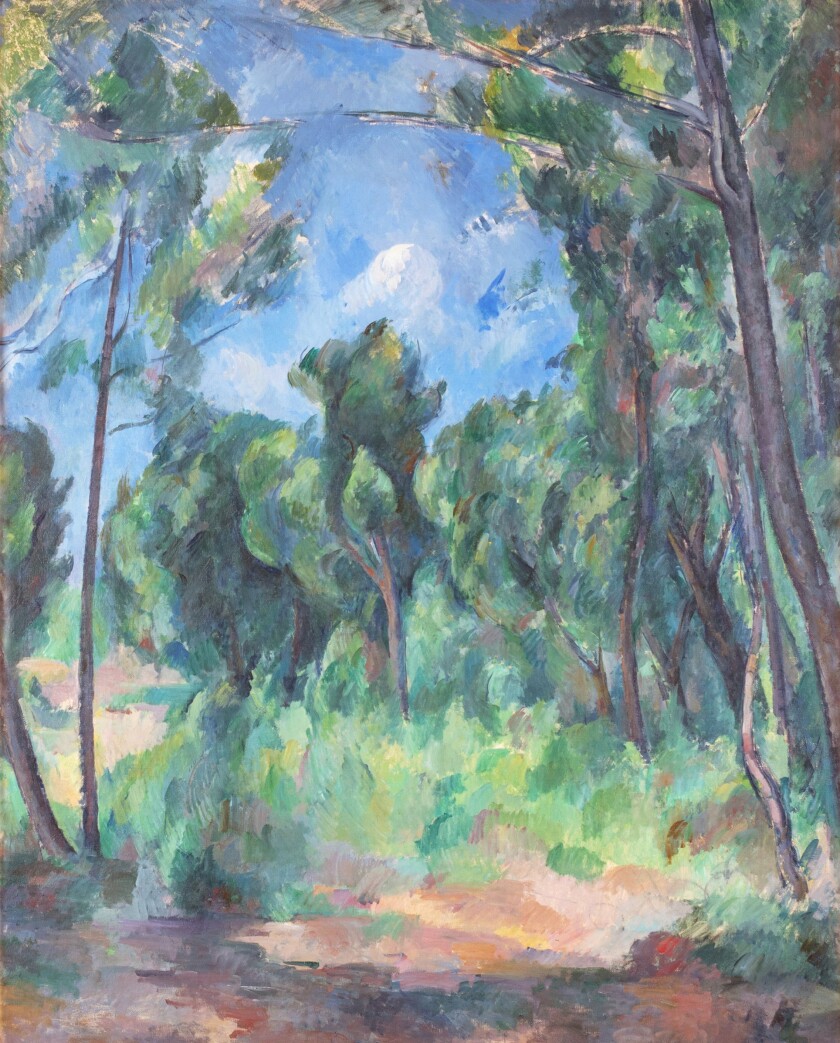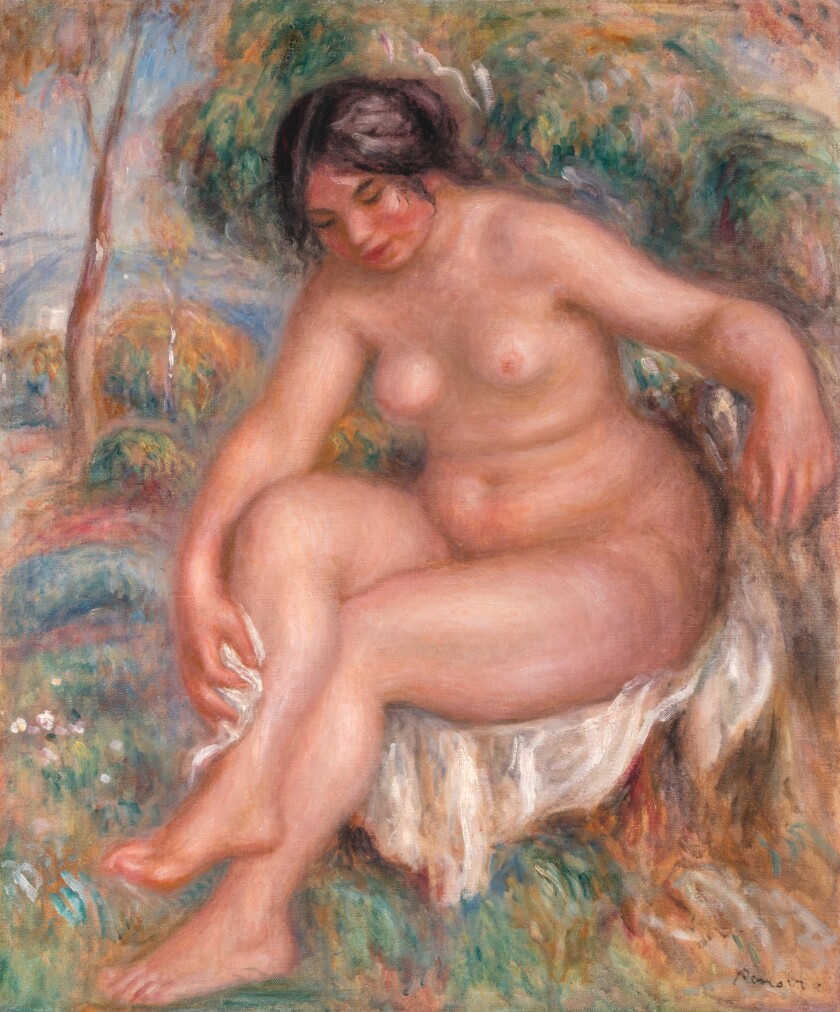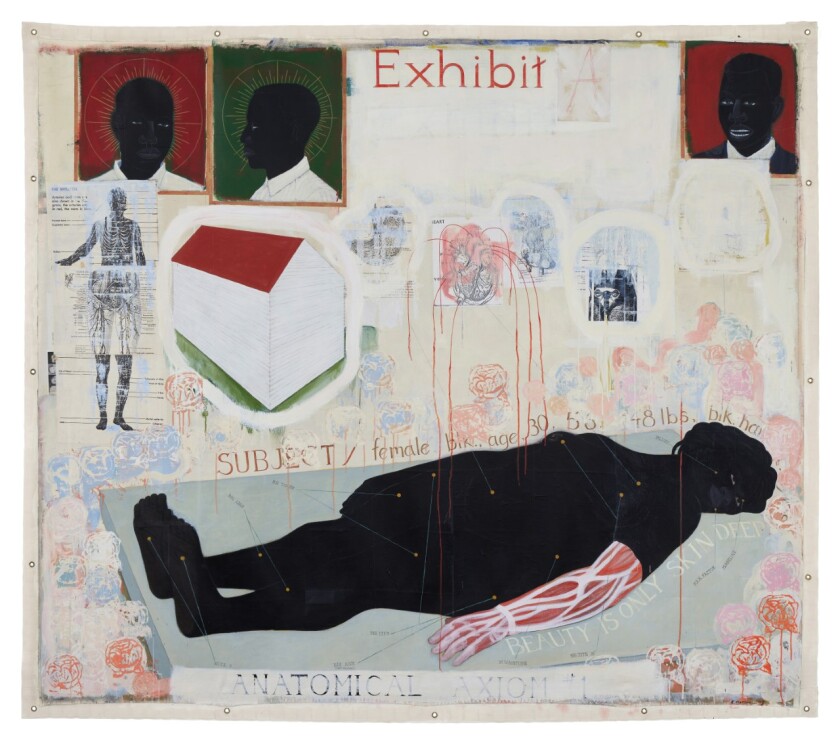The bombshell the latest information that conservatives on the United States Supreme Court are poised to erase abortion rights is 1 evident indication that the Reagan Revolution of the 1980s carries on to exert a profound impression on American lifetime. To remake the court docket in the conservative religious impression of Antonin Scalia, a Reagan appointee, took some time but, now that it is completed, unspeakable damage is remaining inflicted on the nation.
Significantly less noticeable is the diploma to which the ideal-wing change carries on to mar the country’s cultural lifetime.
Reagan’s embrace of the religious ideal was designed to end and, if doable, reverse really hard-won civil legal rights gains of preceding many years. His antigovernment philosophy also advocated privatizing community assets to address urgent social troubles. That damaging idea has been championed by some art museum leaders.
Major of the record: Offering critical art from museum collections is foolishly pursued as a excellent way to increase revenue to aid variety initiatives. To fund the hard get the job done of local community-oriented institutional adjust, a counterproductive raid on the assortment is defended.
In Baltimore, San Francisco, Newark, N.J,, Brooklyn, Syracuse, N.Y., and in other places, big artwork by big artists has been pushed out the nearby museum doorway in current years, with tens of thousands and thousands of pounds welcomed in. The hottest case in point is in northwest Ohio, wherever the venerable Toledo Museum of Art has place upward of $48 million really worth of artwork — and most likely as considerably as $62 million, if the estimates are suitable — to be monetized on the auction block at Sotheby’s in New York on Might 17.
This is the greatest deaccession sale nevertheless.
One 1923 painting, “Fleurs (Bouquets)” by Henri Matisse, has been in the museum’s collection for 87 decades. Paul Cézanne’s virtually summary landscape from about 1895, “Clairière (The Glade),” entered the collection throughout Planet War II. Pierre-Auguste Renoir’s 1912 “Nu s’essuyant (Nude Drying Herself)” arrived in 1955.

Paul Cézanne, “Clairière (The Glade),” circa 1895, oil on canvas
(Toledo Museum of Art/Sotheby’s)
I know people paintings. As a graduate scholar in the mid-1970s, I was a fellow at the TMA. Back again then, it in no way happened to me that the term “permanent” in the museum’s stellar long lasting selection apparently intended 67 a long time, max.
But that was right before Reagan and the trickle-down vogue for privatizing.
The TMA’s current director, Adam Levine, wasn’t born still when the previous California governor moved into the White Household. He’s grown up in an era of privatization. It is a norm. Many of the museum directors these days engaged in marketing off selection artwork to fund their tasks are of a similar era. Fairly than keeping business, they go with the industry.
Even now daily life, landscape, determine — at the auction, a array of topic matter in the influential formation of Modern day French portray will undoubtedly go from public to non-public ownership. Virtually no museum could manage to obtain a $40-million Cézanne or $18-million Matisse. Phone it compelled retirement. All three shots occur with assures, which signifies if no bidder is productive the auction dwelling purchases the portray for a formerly agreed on bare minimum.
The marvelous Cézanne, a nearly summary spatial framework built from flat, planar brushstrokes of environmentally friendly, blue and ochre, even has an irrevocable bid. An unknown consumer has a murky financial interest in the sale and, if outbid, gets payment from the auction dwelling for placing up the irrevocable bid in the first place.
Casino gambling, kind of, with a main Toledo portray as the blue chip.
The shame of the sale does not appear from any concern of the three paintings’ relative good quality. The Cézanne and Matisse are terrific, the Renoir not so substantially (even though it is solidly representative of his late operate). In a Zoom interview, Levine readily acknowledged as substantially. “There’s no problem those people are powerful photos,” he stated.

Pierre-Auguste Renoir, “Nu s’essuyant (Nude Drying Herself),” 1912, oil on canvas
(Toledo Museum of Art/Sotheby’s)
Devoid of a staff curatorial specialist in the area, outside the house thoughts were solicited. Levine claimed the anonymous authorities mostly agreed on evaluations of top quality, when differences of view were registered on the knowledge of taking away the artwork from the selection and sending it to current market. The Toledo Blade, the nearby newspaper, editorialized versus the sale.
I’m on the facet of all those who said no. More than 10% of the painters in the TMA selection are represented by a number of examples, but apparently two Cézannes are one particular Cézanne too numerous. This is odd for a guy colloquially regarded as the father of Modern-day artwork — whilst maybe not for a painting envisioned to haul in $40 million by itself.
The shame is that the museum feels no obligation to maintain these operates in the general public realm, where they’ve resided for generations. The artists are inarguably big figures in Present day art’s heritage, and these paintings illuminate vital areas of their function holding them is a key purpose an artwork museum exists.
The Toledo sale comes in the aftermath of a really serious blunder produced by Levine a minimal more than a thirty day period soon after he stepped into the director position two decades in the past. When a Minneapolis policeman murdered George Floyd — a ghastly crime captured on a mobile mobile phone online video that went viral — cultural institutions across the state were being being pressed on their histories of racial, gender and other exclusions. 9 days later, as righteous protests were being exploding close to the region, Levine released an sick-regarded as assertion condemning looting and asserting that the museum would remain “nonpartisan and disinterested” on the situation since the museum “does not have a political stance.”
A absence of awareness of systemic white supremacy absolutely is not in the exact same universe as seeking to shoot a number of protesters marching from it, as we just lately acquired former President Trump hoped to do. But response to Levine’s silly statement was swift and fierce, with justly indignant activists shortly arriving on the TMA’s entrance ways.
With great motive, our huge, conservative museums have very little to no political believability. Levine apologized, reconsidered and issued a formal diversity, equity, accessibility and inclusion program. A collections audit was purchased, and — no shock — indicated the finest imbalances exist across nationality, gender, sexual orientation, race and ethnicity.
That doesn’t indicate offering remarkable museum artwork to rectify the disproportion will make feeling.

Kerry James Marshall, “Beauty Examined,” 1993, acrylic and collage on canvas
(Loma Linda College/Sotheby’s)
Coincidentally, a pivotal 1993 Kerry James Marshall portray, “Beauty Examined,” hits the auction block two days just after Toledo’s photos, consigned to Sotheby’s by Loma Linda University, just outside San Bernardino, to increase funds for investigate at the school’s Center for Genomics. (The estimate is $8 million to $12 million.) Marshall, as a Black American, insists that the legacy of white European portray is as much his as anyone’s. “Beauty Examined” seamlessly — and analytically — melds components drawn from sources as varied as Rembrandt, Charles White, Paul Gauguin and Yoruba courtroom art.
The Toledo Museum has created its amazing selection since 1901 many thanks to the largesse of founders Edward Drummond Libbey and Florence Scott Libbey. Stupendously rich from producing glass, they remaining endowments of roughly $40 million. About 50 % the expense cash flow, this calendar year predicted to amount to $1.6 million, is demanded to be applied to get artwork.
That acquiring electricity has dwindled as the artwork industry has skyrocketed. (Levine asserted that a Cézanne sale experienced been talked over internally for decades, and sector realities made the variance in pulling the trigger now.) Income from the Sotheby’s sale is predicted to at minimum double the museum’s confident once-a-year outlay.
For the foreseeable potential it will be directed toward redress of individuals selection imbalances, whilst Levine did not identify any distinct gathering targets. The general aim is “to diversify our assortment, searching for splendor devoid of bias,” as the director place it in a letter to museum membership asserting the sale.
That’s superior — even in spite of the buzzy, brand-administration glossiness of “beauty bias” sloganeering.
Not so fantastic: The museum is turning its celebrated art selection into a sector-timed piggybank to pay out for crucial structural adjust.
Phone it the path of the very least resistance. I’ve claimed it before and I’ll say it all over again: Asserting that “when the likely receives tough, the hard go shopping” is a preposterous way to operate an art museum.
The for-earnings market right now qualified prospects substantially of the nonprofit museum planet close to by the nose. But the core museum mission is accumulating, looking into and preserving terrific artwork, and a conservative approach of privatizing irreplaceable public assets in the identify of liberal progress is backward. The Toledo sale is unconscionable.









More Stories
Show Don’t Tell | FineArtViews
Julie Karpodini: Painting Instinct – Jackson’s Art Blog
Vote Tuesday – Democracy is in the Balance